#kaname tasuku
Text
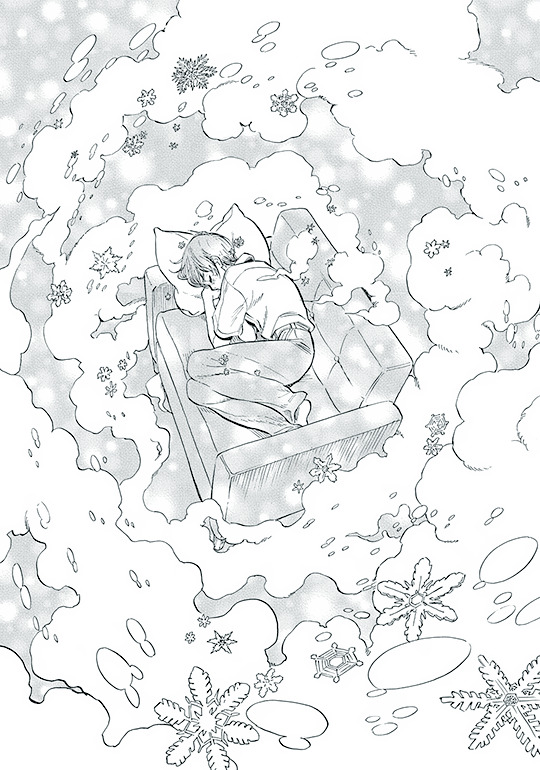
SHIMANAMI TASOGARE (2015-2018)
by kamatani yuuki
97 notes
·
View notes
Text
Review #29: Our Dreams at Dusk: Shimanami Tasogare (Volume 4)

Japanese title: しまなみ誰そ彼 (Shimanami Tasogare)
Story and art: Yuhki Kamatani
English publisher: Seven Seas Entertainment
Number of volumes: 4 (complete)
A glimpse of several futures.
[CW: Mentions of homophobia]
(This review contains story spoilers.)
When I got my physical copies of Our Dreams at Dusk, one of the first things I noticed was how much thicker Volume 4 was compared to all the others. As I began reading the series though, I realized that this last volume was much longer because it had the very lofty task of wrapping up quite a number of plotlines brought up in the first three volumes. And when I realized that this volume was introducing new plot arcs on top of that, I almost wondered why it wasn’t even thicker than it already was.
That said, this does mean that there’s a lot I want to talk about in this volume, but since I don’t want this review to be too lengthy, I figured I’d just focus on the three couples that get the spotlight here. With two of them already in the front cover and the third in the back, I figured it’d feel right to give them the focus, as most of the smaller plot arcs revolve around one of them anyway.
And of course, I should start with the women of the hour - Daichi and Saki, who go through quite a lot before their wedding at Triangle House. With the volume starting out by reminding us that Saki has yet to come out to her parents, you can already sense that the story is building up to that moment. Saki’s been in the background for the past two volumes, so we don’t really get the sense that she’s more willing to face the situation now than she was in the first volume, but with a wedding on the horizon, she definitely finds it more urgent than ever before.

Unfortunately, the way Saki’s parents find out is less than ideal - someone outs her to them. While it’s definitely realistic, I can’t help but feel incredibly sorry for her, as she already had a lot of hesitation about coming out to her parents, so someone else ripping off that bandage from her must’ve stung a lot. Daichi is also at a loss with what to do, as we found out back in Volume 1 that when she came out to her own parents, it was less than ideal.
Thankfully, the couple’s confrontation with Saki’s parents turn out to go quite well. We get a really great speech from Saki’s father here, where he admits that he was very much against the idea when he first heard it. But immediately after, he said that he hated himself for even thinking that when his priority should be his daughter’s happiness. We get a funny interjection from Saki’s mother here, saying that she would’ve been furious with her husband if he didn’t take it the right way. She seems to have already made her peace with her daughter’s sexuality quite some time ago, as she said that she “had a feeling about it.” It might not be the sheer open-mindedness of Tomoko, but it’s pretty much the best possible outcome Saki could’ve gotten.
This ended up a lot more optimistic than I thought it was going to go, but both Daichi and Saki deserve it. Their wedding happens with both of their parents attending, and they finally get to be their true selves in front of their families. It’s the most definitively happy ending out of all the characters in this series, and while I wish we got a bit more build-up for it - especially from Saki’s perspective - I do think it’s a great note to end their plotline on.
Moving back a bit, the person who ends up outing Saki to her parents is Tsubaki’s father, who we know from previous volumes has a pretty warped view of the LGBT community as a whole. So when he visits the drop-in center to apologize to Saki (though he doesn’t find her there as this happens around the same time as Saki’s conversation with her parents), Tsubaki is understandably mad at his father’s insensitivity. The dad is taken aback by his son’s attitude, but he then connects the dots and asks Tsubaki who “dragged him into homosexuality.” We know from the previous volume that Tsubaki is still confused about his identity, so he understandably becomes very defensive at his dad’s assumptions.
Who ends up saving the day, though, is Tasuku, who not only makes the bold decision of coming out to Tsubaki’s father, but also tells him why such an action is important for any LGBT individual. It’s a really great scene for Tasuku, as not only does it show how much he’s learned about the LGBT community across the past volumes, but it also shows how much more comfortable he is about his sexuality. He’s spent the past volumes learning from everyone in the drop-in center while also dealing with his own issues, so to see Tasuku be a lot more confident in this volume is really nice.
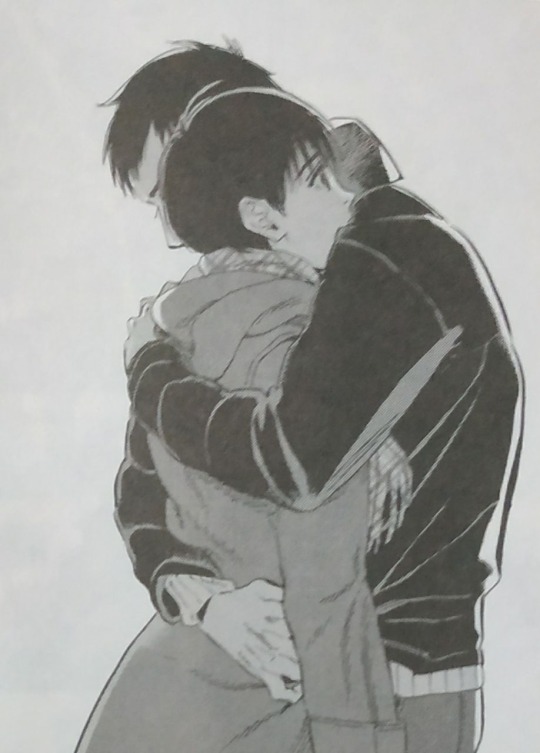
This more confident Tasuku isn’t lost on Tsubaki either, who’s own feelings about his sexuality were already in a flux and were only made worse after that exchange with his father. It leads to this great scene between them where Tsubaki acknowledges Tasuku’s feelings for him but admits that he isn’t ready to face them just yet. This is probably my favorite ending out of all the characters in this series, as instead of treating Tsubaki’s uncertainty about his sexuality as an issue that needs to be solved, the story simply acknowledges it as something he’s continuously working on. I praised Utsumi’s character in Volume 3 for having a different approach to his sexuality, and I can say the same for Tsubaki here - even if we can make all the assumptions we can about it (especially after the epilogue), the fact that the story leaves Tsubaki’s identity open-ended is a great way to show that he himself isn’t ready to put a label on it just yet.
Admirably, Tasuku isn’t heartbroken about this admission, and he even reassures Tsubaki that being confused about his feelings is fine and that he should take all the time he needs to sort them out. Not only is Tasuku using his personal experiences here, but he’s also putting what he learned from Misora and Utsumi in the previous volumes to good use. It only adds to his character development I mentioned earlier, as the Tasuku from three volumes ago wouldn’t have had the same reaction as the Tasuku here. He seems to be heading toward his own happy ending, though, as the epilogue shows Tsubaki telling Tasuku that he can call him by his first name.
(I also have to briefly mention that Tsubaki gets quite touchy with Tasuku throughout this volume, and I find it hilarious that Tasuku’s reaction to these gestures is very mixed. He calls Tsubaki out on it in the epilogue but they don’t really address it, and I think Tsubaki knows that Tasuku likes it anyway.)
Shifting the good mood a bit is Tchaiko, who I don’t think I’ve mentioned in my previous reviews but has been one of the constant presences in the drop-in center since Volume 1. He’s the eldest among the regulars in the center, but we don’t really get much from him in the first three volumes apart from his love of classical music. He gets a full on arc here, though, when we find out that he’s been in a 30-year relationship with his partner, Seichiro, and Tchaiko constantly visits him in the hospital as Seichiro is dealing with a grave illness.
I already had a bad feeling about where this was going from the start, but the conflict of this plot arc doesn’t actually come from Seichiro’s numbered days - it actually sounds like they’ve both quietly accepted it and are only waiting for the inevitable. Instead, it revolves around how Tchaiko hasn’t come clean about his relationship with Seichiro’s son, Akira, and we find out that Tchaiko times his hospital visits so that he’s there when Akira isn’t watching over his father. I was pleasantly surprised that the story went this route, and it even makes for a nice parallel with the two other main conflicts I talked about above - what with all three of them dealing with family complications.

These two largely stay in the background for the middle part of the volume, but on the day of Daichi and Saki’s wedding, Tchaiko gets a text from Akira saying that Seichiro is in a critical condition. This definitely catches Tchaiko off-guard, as not only does he have to deal with the imminent death of the love of his life, but he also has to contend with the fact that Seichiro had apparently told Akira about him. He then has a great scene with Someone-San, who we find out earlier in the volume have been friends for quite some time even before the drop-in center existed. Tchaiko relays all of his worries and indecision to Someone-San, but all she does in the face of those doubts is to push Tchaiko and tell him to go. True enough, when he gets to the hospital, Akira only smiles in acknowledgment and gives Tchaiko the opportunity to say goodbye to Seichiro.
Even if I initially found it odd that the story would introduce a brand new plotline when it still had to wrap up quite a number of them, I really appreciated its inclusion in the end, as it has a really unique vibe when compared to all the other plot arcs of the series. I’m not sure if it’s because this deals with a more seasoned couple, but the sense of satisfaction I got from seeing this plotline resolved is a lot different from the other two I talked about above.
And, really, that’s what makes Our Dreams at Dusk such a standout title for me - how it’s able to handle all of these stories and give them the depth they deserve. I was a bit worried that this volume was biting off more than it could chew, but in the end I found myself liking where all of the characters ended up. Sure, I may have wanted more out of some characters, but that’s really just another way of saying that I didn’t want this series to end at all.
Random thoughts that I couldn’t fit elsewhere:
Apart from Tchaiko, the other Cat Clutter member that finally gets the spotlight in this volume is Someone-San, who has really only spent the last three volumes being this mysterious presence that’s both critical to the plot and in the background. We find out here that she considers herself aromantic and asexual, but she doesn’t like putting a label on herself at all, with the name “Someone-San” even being given to her by Tchaiko and Seichiro. We also get a really great line from her about how her asexuality isn’t what defines her, and how it’s only one part of her entire identity. As much as I want to talk about her monologue about who she is, I honestly haven’t wrapped my head around it all that well and I feel like I’m still missing certain pieces about that chapter. I will say that it was a great set of panels though.
One of the other plotlines that gets wrapped up in this volume is Misora's, as Tasuku wants to invite him to Daichi and Saki’s wedding. It goes a lot better than I expected, as Tasuku simply goes through all of the things that he did wrong and asks for Misora’s forgiveness, which he gives almost nonchalantly, but you can tell that he appreciates the gesture. (Also his look in the wedding is his best one in the series.)
I’m kinda surprised that we didn’t get more from Tasuku and Tsubaki’s school life here, as I would’ve expected more people to point out the changed dynamic between the two of them considering that Tsubaki’s fairly popular and Tasuku isn’t. The only one who does point it out is Tachibana, Tasuku’s closest friend in school and teammate in the table tennis club, and all he really says is how he wants to join in on the fun too. I wonder if he’ll notice that there’s more going on between them?

Thanks for reading! You can read my review of the first two volumes here, and my review of the third volume here. Our Dreams at Dusk has really gone up my personal rankings the more I reread it, as there’s really nothing quite like it among the manga I’ve read so far. It’s a really emotional and fulfilling series, and I highly recommend it.
#Our Dreams at Dusk#Shimanami Tasogare#Yuhki Kamatani#Kaname Tasuku#Tsubaki Touma#Daichi Haruko#Saki#Ilya Tchaiko#Agawa Seichiro#LGBT manga#manga review#manga
2 notes
·
View notes
Text
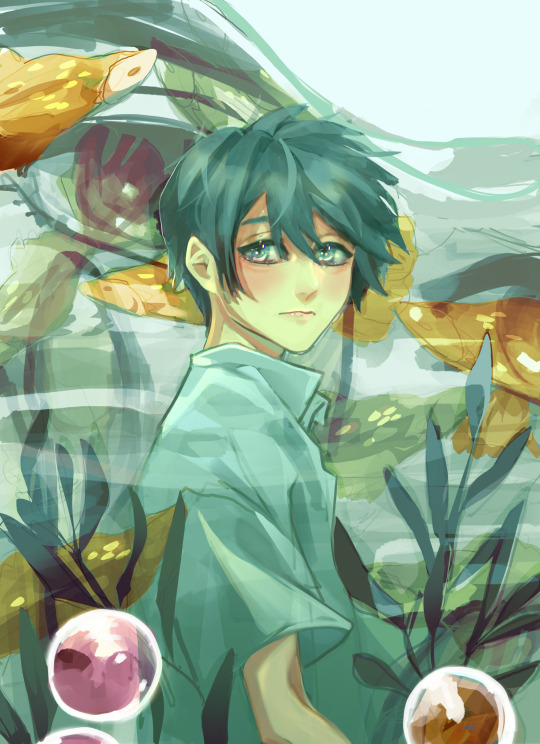
🫧 fish in a bowl slightly cleaned up version
#congrats on graduating from warm-up status tasuku#shimanami tasogare#our dreams at dusk#tasuku kaname#available as a print if u even care#my art
166 notes
·
View notes
Text
Today's LGBT+ Character is;

Tasuku Kaname from Our Dreams at Dusk-Gay
Requested by Anon
Status: Alive
#Tasuku Kaname#Our Dreams at Dusk#gay#lgbt#character of the day#mlm#manga#fandoms i'm not in#requested#lgbt poc#alive#LGBTQueue
12 notes
·
View notes
Photo
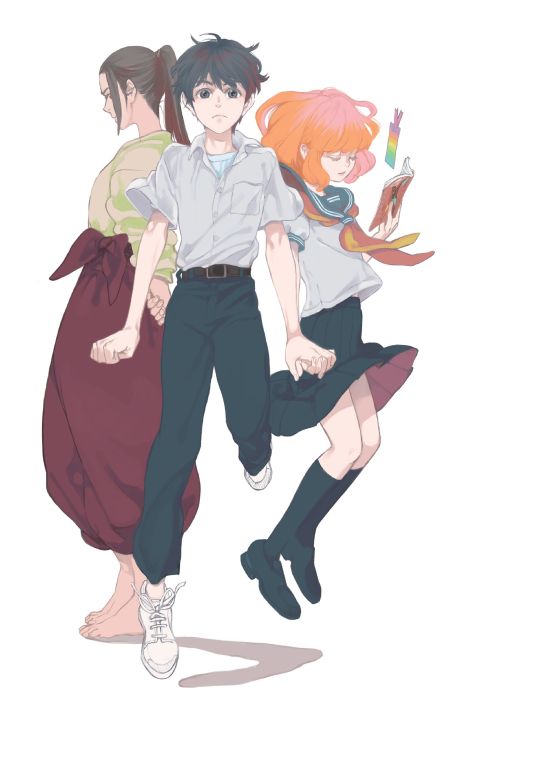
Shimanami Tasogare - Yuhki Kamatani
81 notes
·
View notes
Text
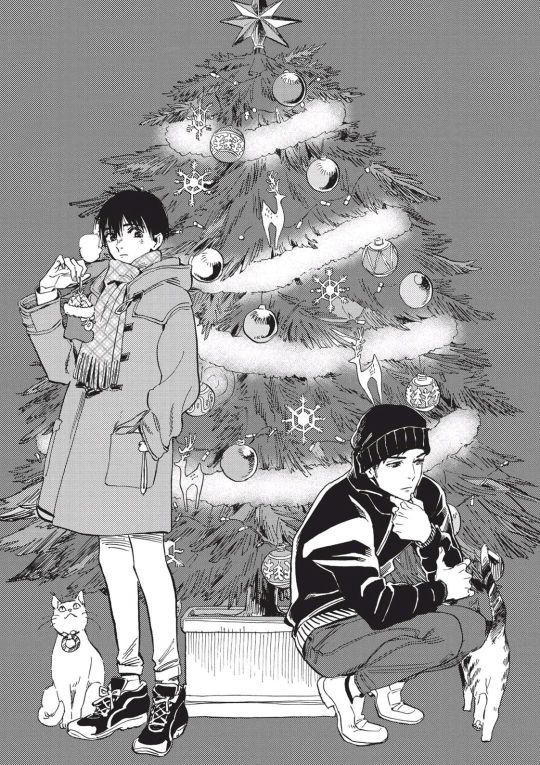
51 notes
·
View notes
Text

50 notes
·
View notes
Text

I love him
3 notes
·
View notes
Text

SHIMANAMI TASOGARE (2015-2018)
by kamatani yuuki
14 notes
·
View notes
Text
Review #12: Our Dreams at Dusk: Shimanami Tasogare (Volume 3)

Japanese title: しまなみ誰そ彼 (Shimanami Tasogare)
Story and art: Yuhki Kamatani
English publisher: Seven Seas Entertainment
Number of volumes: 4 (complete)
Different shades of discovery.
[CW: Mentions of homophobic language]
(This review contains story spoilers.)
When I was outlining the reviews for this project, I was going back-and-forth on whether to review Our Dreams at Dusk’s first two volumes together or to group Volumes 2 and 3 together. While I ended up going with the former since they each focused on the development of one character while this volume focuses on two, I did want to make the parallels between Volumes 2 and 3 since they both feature Tasuku’s efforts to help someone in their own journeys of sexual identity - but the way he does so in both volumes, and the outcome of his efforts, are completely different.
In the end, I thought it was fitting that I give Volume 3 its own review. Not only is it my favorite out of the four, but it lets me talk about Tasuku with the previous two volumes as context, since the running theme here is a product of what he experiences there. In Volume 1, he struggles to vocalize his truth, and it’s only after several denials and realizations that he’s finally able to start honestly talking about his sexuality. Volume 2 has him take on a more active role to help Misora in his own journey of self-discovery, but it ultimately backfires because of what he said, and he’s left wondering if he should’ve even begun that conversation.
All these thoughts lead Tasuku to wonder whether or not “silence is golden” - and I put that in quotation marks as it’s a phrase that comes up several times throughout this volume. As you’d expect, it then leads to plotlines that show the pros and cons of both sides, and that leads to my favorite arc of the entire series.
Utsumi, one of Cat Clutter’s regulars, is revealed in this volume to be a trans man. That his is the only reveal that comes from another person is already very telling - Utsumi has decided that he would only talk about his gender identity on his own terms. He doesn’t flaunt the fact that he’s a trans man, but that doesn’t mean he’s not comfortable with it - in fact, Tasuku observes that Utsumi is already very comfortable just being himself. It’s a great contrast to all the characters we’ve met so far who either struggle with their labels or wear them loud and proud.

Utsumi’s resolve is put to the test, though, with the appearance of Oyama, one of his high school classmates. Not only is she the one to reveal Utsumi’s gender identity to the reader, but she also brings up a lot about his past prior to his transition - including his deadname. This is seen to affect a lot of people in Cat Clutter, especially Daichi, but Utsumi is seen to just take it in stride, and he even goes out of his way to reassure both Daichi and Tasuku that Oyama does mean well despite her rather ignorant actions.
Tasuku is seen to internalize all of what happens above and apply it to his own situation. Suddenly, his question about whether or not silence is golden has a clear answer, as he sees Utsumi already doing great just being content with what he has and Oyama threatening to break that contentment with her words. Moreover, he relates it to what happened between him and Misora in the previous volume, even going as far as saying that he was acting “relentlessly positive” in the same way Oyama is to Utsumi.
But Utsumi does reach a breaking point after he agrees with Oyama to go to lunch with their former volleyball teammates. Oyama is seen going out of her way to defend Utsumi when their teammates ask a rather invasive question, but the critical thing here is how she ignores Utsumi’s remark that he doesn’t really mind the question at all. Add onto that a grim reminder from his past about how his own kind words were taken the wrong way, and it finally leads him to tell Oyama to stop using his situation as a way for her to feel good about herself.
It’s a bombshell of a declaration, and you can’t help but feel relieved that Utsumi finally broke his silence and spoke his mind, especially with how taxing Oyama was for a significant part of the story. And with Tasuku being there to witness all of that, the answer to his question becomes unclear again - here was someone who was comfortable in his silence speaking up and letting someone know that he’s hurt, and Tasuku knows that what Utsumi did was right, even if it led to an uncomfortable situation with Oyama.
How all of this is not clean-cut and has a lot of nuance across all the characters involved is one of the main reasons why this plot arc is my favorite. It might not be as emotionally heavy as the main arcs, but it’s very satisfying to see it play out. Sure, Oyama’s dialogue sometimes makes me want to punch a wall (like Daichi does), but I also share Daichi’s reservations in that it’s hard to actually call Oyama out on any of this since none of it is done with malice. But Utsumi is able to see past her kind facade thanks to their shared bond and his own experiences, and when he finally reaches a point where he realizes that breaking the silence is more beneficial than keeping it, you can’t help but cheer him on.

In any case, Tasuku already has a lot on his mind by this point of the story, and much of it comes from the other character that this volume revolves around - Tsubaki, Tasuku’s crush who ends up helping Cat Clutter out thanks to a chance meeting. Even before I started reading this volume, I found it interesting that Tsubaki is the one who’s spotlighted in the cover, as there’s quite a lot that we’ve yet to find out about him, a sentiment that Tasuku shares throughout the story.
There is a lot that happens in this arc that I want to talk about - the harbor scene and how it parallels with the festival scene, the ramen shop scene and how it introduces us to the best unnamed character in the series, the observatory scene between Tsubaki and Someone-san - but for this review, I wanted to focus on one aspect that sort of ties a lot of these scenes together. In the middle of the first chapter, we see Mai - Oyama’s daughter - making a boat for her tile in a Cat Clutter activity. Tsubaki then points out that he loves boats, and we see him know quite a lot about them later in the story. Meanwhile, Tasuku is making a UFO for the same activity, and we know from the previous volume that he’s into fantasy and the paranormal.
Unexpectedly, the story turns these two minor details into a recurring image, as in the same chapter, we see Tsubaki being taken by a UFO - not literally, of course, but it’s meant to symbolize Tasuku’s confusion on how Tsubaki reacted to Misora calling him a homo in the previous volume. I think it’s meant to play with how Tasuku likes the paranormal and Tsubaki being a literal mystery to him - as Tasuku himself points out - but this UFO image becomes a lot more powerful later in the story.
But before that, we get to the harbor scene, where Tsubaki and Tasuku are attending a ship launch with two of the former’s friends for a class project called “My Shimanami,” which requires them to take a photo of something around the city that “speaks to them.” We already know that Tsubaki is a big boat fan, but we get a great line from Tasuku here about what this ship launch means to him - spending all this time with his crush, who’s treating him normally even after all that’s happened in school, is giving him yet another reason to be grateful that what he attempted at the very first scene of the series didn’t happen. It’s a really nice thing to hear from Tasuku, as he’s finally in a place where his thoughts about his sexuality aren’t eating him up inside - though they still weigh heavily over him, of course - but it adds another layer to why this ship launch, and the boat imagery in general, is important to him.
So we have two images that’s shown as being a favorite for Tasuku and Tsubaki that’s given an additional layer of meaning when applied to the other. This series is no stranger to using visual metaphors to highlight certain aspects of the plot, but I feel like these two examples are among the strongest across all the volumes. Not only are they built up over the course of this volume, but there are a lot of ways to read them in the context of both characters.

Take the sudden appearance of a small UFO right after Tsubaki’s heated exchange with Someone-san, who’s visibly shaken after the latter asks the former if he’s gay. Taking into account the first time a UFO appears in the story as a visual metaphor - with the UFO taking Tsubaki and Tasuku likening it to how he’s a mystery - this could signal the reader what this mystery actually was, but it can also be seen as Tsubaki wanting to be “taken away” now that what he’s been dealing with internally is suddenly out in the open. But on an even more basic sense, since UFOs are known to be Tasuku’s favorite, this could be seen as Tsubaki immediately thinking about Tasuku once Someone-san asks him about his sexuality, and whether this means that he’s relating to Tasuku’s internal struggles or is giving us the reason why he’s questioning his sexuality is up for interpretation.
Arguably all of these interpretations could work during the next and final time a UFO appears in this volume - right in the middle of the confrontation between Tasuku and Tsubaki. With the latter still shaken by his encounter with Someone-san, Tsubaki suddenly falls down to calling Tasuku and the rest of Cat Clutter with homophobic slurs. Tasuku is taken aback by this, as not only is his initial fears of Tsubaki hating him for his sexuality looking like it was coming true, but more importantly, he recognizes that there’s something going on with Tsubaki that’s provoking him to say this offensive language. Framing all of this is the image of Tsubaki being taken by the UFO again, but it’s now depicted as a cage of sorts that’s taking him away from Tasuku.
But Tasuku breaks through this facade - and we see him literally breaking through one of the UFO’s windows in the panel. Urged by how Utsumi dealt with Oyama, Tasuku finally finds the courage to be honest about his feelings to Tsubaki, but it’s also used to give his crush a piece of his mind. Tasuku wants to be honest about his feelings because he doesn’t want the person he likes to hurt others with his words. It’s a fantastic line, and it shows a lot of maturity in Tasuku’s character, especially when you relate it to everything he’s been through up to that point.
It’s no surprise, then, that the visual metaphor used right after this exchange is a boat that gives both Tasuku and Tsubaki a “ride.” But it’s not just any boat - it’s the boat made from a montage of all the images that were part of the “My Shimanami” project, which again are photos that are supposed to best encapsulate which part of town speaks to the photographer. You can make all the connections about the whole “finding myself” conflict that runs through the entire series to this project, so to see it as the boat that brings Tasuku and Tsubaki together - or, rather, what lets them see eye to eye - is a great way to cap off the heated exchange.
Tasuku comes away from that conversation still a bit confused about what Tsubaki’s whole deal is, but he has an important piece of the puzzle now - he recognizes that what Tsubaki is going through is something he himself is very familiar with. This leaves him in an interesting place going into the series’ last volume, and all of this cements just how rich and nuanced Our Dreams at Dusk is when it comes to its characters and conflicts. I didn’t expect to get emotional over seeing UFOs and boats, but here I am.
Random thoughts I couldn’t fit elsewhere:
I do want to mention Mai, Oyama’s daughter who seems to recognize her mother’s faults in her own way. We don’t really hear much from her, but you get the sense from her reactions that her mother’s behavior is very familiar, and you can easily compare how she is around Cat Clutter with how she is around Oyama. She shows up a bit in the fourth volume but none of her conflicts are really addressed, but her being able to continue visiting Cat Clutter could already give us some hints about how her relationship with her mother has evolved.
Shout out to the unnamed girl in the ramen shop who calls out Tsubaki and gives Tasuku his first argument against the whole “silence is golden” issue. As much as this series does a great job in showing the harsh realities that LGBT people face in Japan, it’s also a reality that you can find allies where you least expect it.
Daichi sadly doesn’t do much in this volume, but she does have a lot of hilarious reaction faces, especially concerning Oyama. She gets a lot more to do in the next volume though, as the last page of this one implies.

Thanks for reading! You can read my review for the first two volumes here. This was longer than my usual reviews, but it’s because Volume 3 is my favorite. I felt that both of its major plot arcs are the strongest in the series, and that’s saying something since Our Dreams at Dusk is filled to the brim with great plotlines. I have one more review lined up for Volume 4, which I’ll be posting later this month.
#Our Dreams at Dusk#Shimanami Tasogare#Yuhki Kamatani#Kaname Tasuku#Tsubaki Touma#Utsumi Natsuyoshi#LGBT manga#manga review#manga
4 notes
·
View notes
Text
Oltre le Onde, un bel manga LGBTQIA+
Oltre le Onde, un bel manga LGBTQIA+
Oggi vi consiglio questo manga, Oltre le Onde – Shimanami Tasogare di Yuhki Kamatani edito da Jpop , che mi ha coinvolta già dal primo volume! Non ci sono ancora tantissimi fumetti LGBTQIA+ ma qualcosa sta cambiando nel panorama giapponese nell’ultimo decennio. È bello che un ragazzo dichiari il proprio orientamento sessuale senza espedienti, travestimenti e ambiguità sul genere dei personaggi…
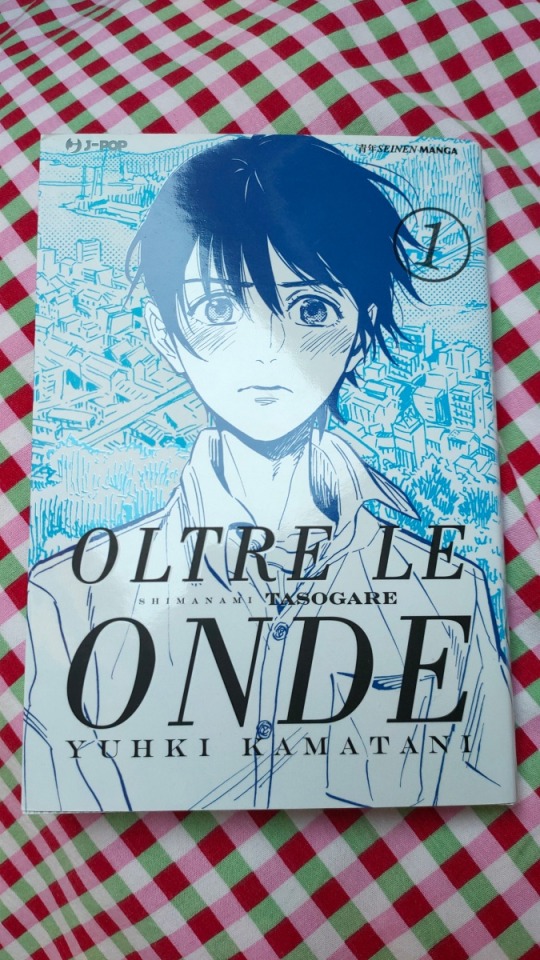
View On WordPress
1 note
·
View note
Text
Aspec Manga Rec: Our Dreams at Dusk
Written and illustrated by Yuhki Kamatani, Our Dreams at Dusk is a manga about self acceptance, dealing with expectations, the power of queer spaces and the relief in questioning one's own identity.
Trigger Warning: Homophobic Comments, Mentions of Sexual Content, Transphobia, and Mentions of Suicidal Intent. I you can handle these topics, I highly reccomend this manga. If not, I break down the main aspec character below the break.
This manga is a masterpiece of identity and the overwhelming heteronormative expectations of society. The manga itself is incredibly contemplative of these topics but also the power and solidarity that comes with queer spaces. A lot of this is my own interpretation and the manga leaves a lot up in the air for the reader to decide for themselves.

Light Plot Spoilers Below:
The main plot of the manga follows Tasuku Kaname and his process of dealing with the fact that he was outed as gay to his high school class. The evolution of his self-acceptance and moving towards living a queer life in the public eye is the main conflict, but he isn't the one I want to focus on.
The main supporting character of the manga is Anonymous. She owns the small house from which a community sprung out supporting many queer individuals who couldn't find themselves elsewhere in society. But her origins are what make her characterization as an aspec character interesting, though she prefers to remain unlabeled.
We are first introduced to Anonymous as she flies through the air and confronts Tasuku when he is contemplating suicide after being outed at school. Multiple times throughout the manga show her often appearing and disappearing at will, seemingly able to do whatever she wishes to do. She is as she says, "nobody".
In listening to one of the older members of the community, they recount giving her the identity of "nobody" because she felt like she couldn't be defined by society because of her lack of romantic and sexual attraction.



Important Note: A lot of the time in Japanese Media the term "Asexual" refers to the term "Aromantic Asexual" in English as it is in this case. An "alloace" would be "Nonsexual". There isn't any adopted phrase for aroallo people, though there are ways of describing the feeling rather than a label.
Anonymous desired to be so because of a lack of social support in Japanese society for people that want to remain "isolated", so she accepted an identity that remains "invisible". Anonymous also identifies as free of gender but is referred to by female pronouns.
This ungrounded identity is really expressed later in the manga near the end, inspiring the idea that your labels aren't your entire personhood and that you are a living breathing person just like everyone else, even if you are Anonymous. Anonymous isn't Anonymous because she is Asexual; she is because she wants to remain undefined as a person. Anonymous isn't a list of labels and personality traits, she is the foundation for a network of support, and that is what is most important to her.
Anonymous is a characterization of the role of queer communities in supporting others without taking on the burden of their identities to try and understand.
TLDR:
Our Dreams at Dusk presents an aspec character dealing with the weight of societal expectations through a disassociation of identity from self. Anonymous exists as both herself and the personification of queer support.
#aspec character#manga rec#I could write essays on this#I really want to actually#asexuality#aromantic#our dreams at dusk
29 notes
·
View notes
Photo

Shimanami Tasogare - Yuhki Kamatani
144 notes
·
View notes
Text
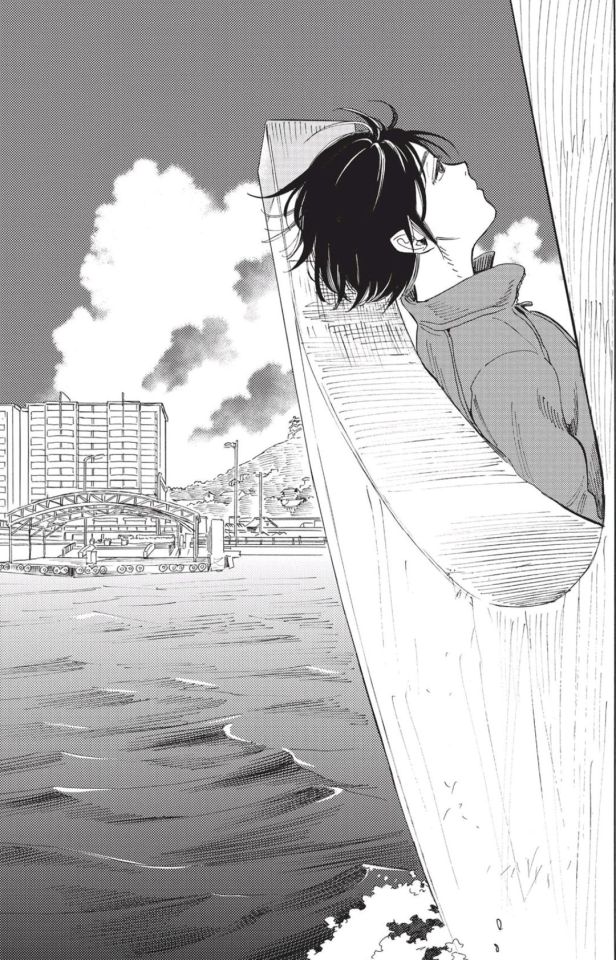
53 notes
·
View notes
Photo

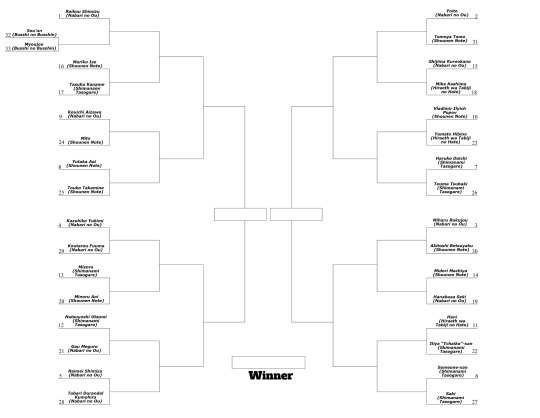
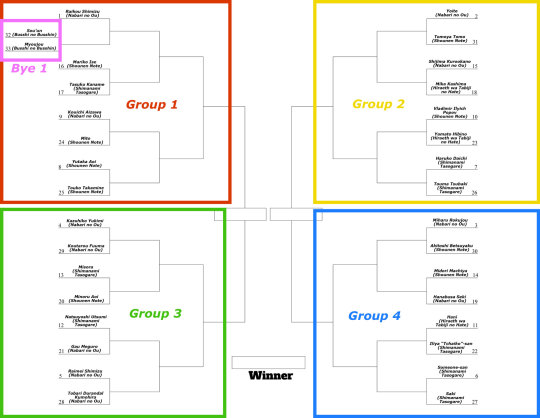
finally, a tournament bracket where a Kamatani character will advance past the first round
announcing the All-Kamatani Tournament Bracket! this tournament will start with one bye (pre-round match) tomorrow, June 7 (all times are in Pacific time). each poll will run for one week, typically starting on Thursdays. I’ve separated the initial round (following the bye) into four groups of four polls each so as to not overwhelm with polls.
image descriptions below cut (for length)
[image description:
image 1: “All-Kamatani Tournament Bracket” “finally, a tournament where a Kamatani character will make it past the first round.” The background shows the covers of the first volumes of Yuhki Kamatan’s major serialized works, in chronological order: Nabari no Ou, Shounen Note, Busshi no Busshin, Shimanami Tasogare, and Hiraeth wa Tabiji no Hate.
image 2: tournament bracket. On the left side: Seed 1, Raikou Shimizu (Nabari no Ou), faces the winner of bye 1 (Seed 32, Sou’un, Busshi no Busshin, versus seed 33, Myoujou, Busshi no Busshin). Seed 16, Mariko Ise (Shounen Note), faces seed 17, Tasuku Kaname (Shimanami Tasogare). Seed 9, Kouichi Aizawa (Nabari no Ou), faces seed 24, Mito (Shounen Note). Seed 8, Yutaka Aoi (Shounen Note), faces seed 25, Touko Takamine (Shounen Note). Seed 4, Kazuhiko Yukimi (Nabari no Ou), faces seed 29, Koutarou Fuuma (Nabari no Ou). Seed 13, Misora (Shimanami Tasogare) faces seed 20, Minoru Aoi (Shounen Note). Seed 12, Natsuyoshi Utsumi (Shimanami Tasogare) faces seed 21, Gau Meguro (Nabari no Ou). Seed 5, Raimei Shimizu (Nabari no Ou) faces seed 28, Tobari Durandal Kumohira (Nabari no Ou). On the right side: Seed 2, Yoite (Nabari no Ou) faces seed 31, Tomoya Tomo (Shounen Note). Seed 15, Shijima Kurookano (Nabari no Ou) faces seed 18, Mika Kashima (Hiraeth wa Tabiji no Hate). Seed 10, Vladimir Ilyich Popov (Shounen Note), faces seed 23, Yamato Hibino (Hiraeth wa Tabiji no Hate). Seed 7, Haruko Daichi (Shimanami Tasogare), faces seed 26, Touma Tsubaki (Shimanami Tasogare). Seed 3, Miharu Rokujou (Nabari no Ou), faces seed 30, Akitoshi Betsuyaku (Shounen Note). Seed 14, Midori Machiya (Shounen Note), faces seed 19, Hanabusa Seki (Nabari no Ou). Seed 11, Hani (Hiraeth wa Tabiji no Hate), faces seed 22, Iliya “Tchaiko”-san (Shimanami Tasogare). Finally, seed 6, Someone-san (Shimanami Tasogare) faces seed 27, Saki (Shimanami Tasogare).
image 3: The same tournament bracket, but with lines separating it into four groups by quadrant. The upper left is group 1, the upper right is group 2, the lower left is group 3, and the lower right is group 4. Included in group 1 is Bye 1, which separates the match between Sou’un and Myoujou from the rest of the group.
/end image description.]
#nabari no ou#shimanami tasogare#shounen note#our dreams at dusk#yuhki kamatani#shonen note#busshi no busshin#hiraeth wa tabiji no hate#hiraeth the end of the journey#tournament
42 notes
·
View notes
